It took me a little while to work this out but for fellow newbies like me, here is my fully documented solution to creating customised dialog boxes using mahapps and MVVM.
There are probably aspects which could be improved but this is what worked for me.
Declare your dialog resource dictionary in the App.xaml so it is available globally
App.xaml
<Application x:Class="MyAppName.App"
xmlns="http://schemas.microsoft.com/winfx/2006/xaml/presentation"
xmlns:x="http://schemas.microsoft.com/winfx/2006/xaml"
xmlns:local="clr-namespace:MyAppName"
xmlns:Controls="clr-namespace:MahApps.Metro.Controls;assembly=MahApps.Metro"
xmlns:Dialog="clr-namespace:MahApps.Metro.Controls.Dialogs;assembly=MahApps.Metro"
>
<Application.Resources>
<ResourceDictionary>
<ResourceDictionary.MergedDictionaries>
<ResourceDictionary>
<ResourceDictionary Source="DialogResource.xaml" />
</ResourceDictionary.MergedDictionaries>
</ResourceDictionary>
</Application.Resources>
</Application>
The resource dictionary contains the template replacement code for the custom dialog
DialogResource.xaml
<ResourceDictionary xmlns="http://schemas.microsoft.com/winfx/2006/xaml/presentation"
xmlns:x="http://schemas.microsoft.com/winfx/2006/xaml"
xmlns:local="clr-namespace:MyAppName.MyResources"
xmlns:Controls="clr-namespace:MahApps.Metro.Controls;assembly=MahApps.Metro"
xmlns:Dialog="clr-namespace:MahApps.Metro.Controls.Dialogs;assembly=MahApps.Metro"
>
<!== Override default template for Mahapps custom dialog -->
<Style TargetType="{x:Type Dialog:BaseMetroDialog}"
x:Key="NewCustomDialogStyle"
BasedOn="{StaticResource {x:Type Dialog:BaseMetroDialog}}">
<Setter Property="Template">
<!-- Custom template xaml code goes here -- see above StackOverflow answer from Punker76 --->
</Setter>
</Style>
</ResourceDictionary>
Create a WPF window called UserInputDialog then replace all xaml code with customdialog xaml.
Im using Caliburn Micro syntax to bind the buttons to the underlay dialog viewmodel (cal:Message.Attach=).
In the case of dialog xaml code I need to manually specify the button bindings as for some reason with Caliburn Micro it is not automatic like in the main view model.
UserInputDialog.xaml
<Dialog:CustomDialog
x:Name="MyUserInputDialog"
x:Class="MyAppName.UserInputDialog"
Style="{StaticResource NewCustomDialogStyle}"
xmlns="http://schemas.microsoft.com/winfx/2006/xaml/presentation"
xmlns:x="http://schemas.microsoft.com/winfx/2006/xaml"
xmlns:d="http://schemas.microsoft.com/expression/blend/2008"
xmlns:mc="http://schemas.openxmlformats.org/markup-compatibility/2006"
xmlns:Dialog="clr-namespace:MahApps.Metro.Controls.Dialogs;assembly=MahApps.Metro"
xmlns:Controls="clr-namespace:MahApps.Metro.Controls;assembly=MahApps.Metro"
xmlns:cal="http://www.caliburnproject.org"
xmlns:diag="clr-namespace:System.Diagnostics;assembly=WindowsBase"
>
<!-- , diag:PresentationTraceSources.TraceLevel=High -->
<StackPanel Orientation="Vertical" HorizontalAlignment="Center" VerticalAlignment="Center" >
<Label HorizontalAlignment="Center" Margin="10" Content="{Binding MessageText}" />
<TextBox x:Name="tbInput"
Width="200"
Margin="10"
Content="{Binding UserInput}"
HorizontalAlignment="Center"
KeyDown="tbInput_KeyDown"
/>
<StackPanel Orientation="Horizontal" HorizontalAlignment="Center" Margin="10,20" >
<Button x:Name="butOK"
Content="OK"
Width="80"
Margin="10,0"
HorizontalAlignment="Center"
cal:Message.Attach="butOK"
/>
<Button x:Name="butCancel"
Content="Cancel"
Width="80"
Margin="10,0"
HorizontalAlignment="Center"
cal:Message.Attach="butCancel"
/>
</StackPanel>
</StackPanel>
</Dialog:CustomDialog>
And the code-behind for UserInputDialog:
UserInputDialog.xaml.cs
using MahApps.Metro.Controls.Dialogs;
using System;
using System.Windows;
using System.Windows.Controls;
using System.Windows.Input;
namespace MyAppName
{
public partial class UserInputDialog : CustomDialog
{
public UserInputDialog()
{
InitializeComponent();
MinWidth = 300;
MinHeight = 300;
Loaded += Dialog_Loaded;
}
private void Dialog_Loaded(Object sender, RoutedEventArgs e)
{
tbInput.Focus();
}
private void tbInput_KeyDown(object sender, KeyEventArgs e)
{
//Not strictly MVVM but prefer the simplicity of using code-behind for this
switch (e.Key)
{
case Key.Enter:
if(this.DataContext != null) (dynamic)this.DataContext.butOK();
break;
case Key.Escape:
if(this.DataContext != null) (dynamic)this.DataContext.butCancel();
break;
}
}
}
}
Create viewmodel class specifically for the user input dialog
UserInputViewModel.cs
using System;
using System.Windows.Input;
using Caliburn.Micro;
using MyAppName.Models;
using System.Security;
namespace MyAppName.ViewModels
{
public class UserInputViewModel : PropertyChangedBase
{
private readonly ICommand _closeCommand;
public string MessageText { get; set; } // Message displayed to user
public string UserInput { get; set; } // User input returned
public bool Cancel { get; set; } // Flagged true if user clicks cancel button
//Constructor
public UserInputViewModel(Action<UserInputViewModel> closeHandler)
{
Cancel = false;
_closeCommand = new SimpleCommand { ExecuteDelegate = o => closeHandler(this) };
}
public void butCancel()
{
Cancel = true;
_closeCommand.Execute(this);
}
public void butOK()
{
Cancel = false;
_closeCommand.Execute(this);
}
//-----------------
}
}
Create a separate ICommand class to pass in the external dialog close function via the dialog viewmodel constructor
SimpleCommand.cs
using System;
using System.Windows.Input;
namespace MyAppName.Models
{
public class SimpleCommand : ICommand
{
public Predicate<object> CanExecuteDelegate { get; set; }
public Action<object> ExecuteDelegate { get; set; }
public bool CanExecute(object parameter)
{
if (CanExecuteDelegate != null)
return CanExecuteDelegate(parameter);
return true; // if there is no can execute default to true
}
public event EventHandler CanExecuteChanged
{
add { CommandManager.RequerySuggested += value; }
remove { CommandManager.RequerySuggested -= value; }
}
public void Execute(object parameter)
{
if (ExecuteDelegate != null)
ExecuteDelegate(parameter);
}
}
}
And finally here is the main view model code to display the customized dialog box and process the returned user input:-
MainViewModel.cs
using MahApps.Metro.Controls.Dialogs;
namespace MyAppName.ViewModels
{
/// <summary>
/// The ViewModel for the application's main window.
/// </summary>
public class MainViewModel : PropertyChangedBase
{
private readonly IDialogCoordinator _dialogCoordinator;
//Constructor
public MainViewModel(IDialogCoordinator dialogCoordinator)
{
// Dialog coordinator provided by Mahapps framework
// Either passed into MainViewModel constructor to conform to MVVM:-
_dialogCoordinator = dialogCoordinator;
// or just initialise directly here
// _dialogCoordinator = new DialogCoordinator();
}
public async void GetUserInput()
{
var custom_dialog = new UserInputDialog();
custom_dialog.Height = 300;
custom_dialog.Width = 400;
var dialog_vm = new UserInputViewModel(async instance =>
{
await _dialogCoordinator.HideMetroDialogAsync(this, custom_dialog);
//instance --> dialog ViewModel
if (!(instance.Cancel || String.IsNullOrEmpty(instance.UserInput)) ProcessUserInput(instance.UserInput);
});
dialog_vm.MessageText = "Please type in your first name";
custom_dialog.DataContext = dialog_vm;
await _dialogCoordinator.ShowMetroDialogAsync(this, custom_dialog);
}
public ProcessUserInput(string input_message){
Console.WriteLine("Users firstname is " + input_message);
}
}
}


